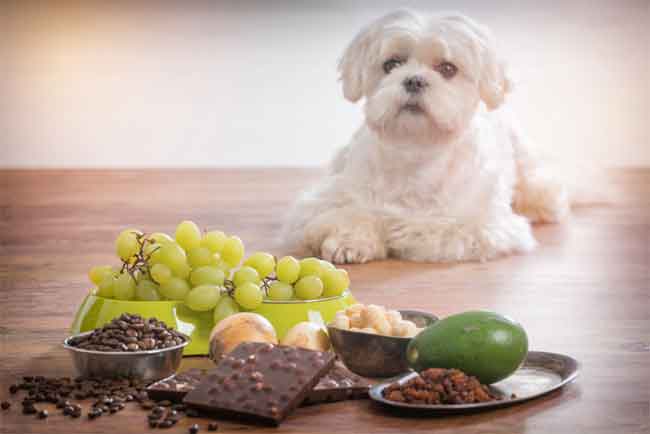It is very frustrating to me how little information is available to dog owners when it comes to the dangers of mold poisoning via dry dog foods. If you raise livestock, you get a plethora of information about mycotoxins and the potentially fatal consequences, as well as newsletters and even kits that are used to test feed before it is given to herds. Maybe the agencies that are responsible for this dissemination of information think that since these animals are used to generate income (and feed humans) that their welfare is more important. I don’t know. I do know that my dog is my baby and I resent not having basic information provided by manufacturers regarding lethal mold that can very possibly be in any bags of kibble, even the high-quality ones.
Mycotoxins are toxigens created by mold and fungus that occur naturally in things made from dried corn, wheat middlings, soy beans, millet and nuts. Humans can be adversely affected by these, as well. Nuts such as walnuts, almonds and peanuts, as well as all kinds of dried fruits and moldy breads, have all tested positive for mycotoxins. Feed manufacturers deal with mold growth at every stage of feed production and are constantly battling with fungicides and inhibitors. (Of course, that means then that your dog is eating all of those herbicides in their food.) Ingredients – grains, meats, fats, fillers – are tested individually and then the finished product is tested. The two main enemies are heat and moisture and so bags are tested regularly, even after transport. However, spores still get through and dogs still get sick and some dogs die or have compromised immune systems for the rest of their lives.
There are more than 200 mold toxins commonly found in animal feeds here in the United States. Different animal species and animals of different ages are all affected in different ways and at different levels. Dogs seem to be much more affected than cats. Older dogs and puppies, dogs on medications or who have immuno-issues are all at higher risk. The two most common are aflatoxin and the appropriately named vomitoxin.
Symptoms

Symptoms include, but are not limited to:
1.) feed refusal
2.) vomiting
3.) lethargy
4.) heart problems
5.) liver damage
6.) yellowing of the eyes, skin and hair
7.) light aversion, dogs want to stay inside and hide from the heat and the sun, refusing even to urinate during the daylight, or only going out in shady areas
8.) neurological disorders
9.) heavy panting
10.) death
Veterinarians tend to miss this diagnosis because the trouble spot is the liver and the tests must be specific and must deal directly with mycotoxins. The best and most reliable “test” is you. If your dog is having these difficulties and your vet cannot conclusively tell you what’s wrong, consider having your dog’s food checked and tested, either by a veterinary college, a toxicology lab or by the State Department of Agriculture. And don’t wait. You may be saving more than one life. If one bag is tainted, odds are others are as well. There were news reports in 1998 that 25 or more dogs died of aflatoxin poisoning in some southern states, know more.
Prevention
The first line drawn in any fight is prevention. It is always easier to prevent than it is to cure. Always check the freshness date on any bag of dog food that you buy and buy the freshest one you can find. This will not guarantee anything, but it is a good first step. Purchase smaller bags, use them up more quickly and only buy food in plastic “barrier” bags, not the greasy paper ones that cheap food comes in. Always store feed in a cool, very dry place with a stable temperature. This goes for everybody’s feed – dog, cat, bird, rabbit, guinea pig, horse. Everybody’s. While some mold toxins cause immediate vomiting, diarrhea and food refusal, not all do. However, if your dog refuses his food, do not insist that he eat it. Don’t leave it down for him for hours, stubbornly thinking that “When he gets hungry, he’ll eat it.” He may be refusing because his powerful nose, which can smell odors approximately 10,000 times better than yours, is telling him that that food is not good for him. Do not store food in a container that has old food in it. Either use it up or throw it out. Continuously placing new food on top of old is an open invitation to mold growth and fat rancidity. If your dog begins to develop any of the signs listed above, immediately stop feeding that bag. Try a new bag or a new brand. If he’s fine with the new stuff, return the old bag to the store. If the store refuses to refund your money, contact the feed manufacturer. Believe me, they will want to talk to you and they never want to deal with an outbreak of mycotoxin and they will most definitely refund your money.
This information is not to freak you out. The most powerful tool that we have is knowledge prior to a problem and this may help you or someone that you know. However, remember that your dog is sensitive to you and to your moods. If you start developing food issues, he will, too. All dry kibbles are susceptible to mold, even great quality brands and “natural” brands. That’s why it’s important to buy small batches and to always look at the date on the bag. If you have a dog with any issues – age, medications, illness – you might want to consider cooking for your dog. It’s easier than you think!



